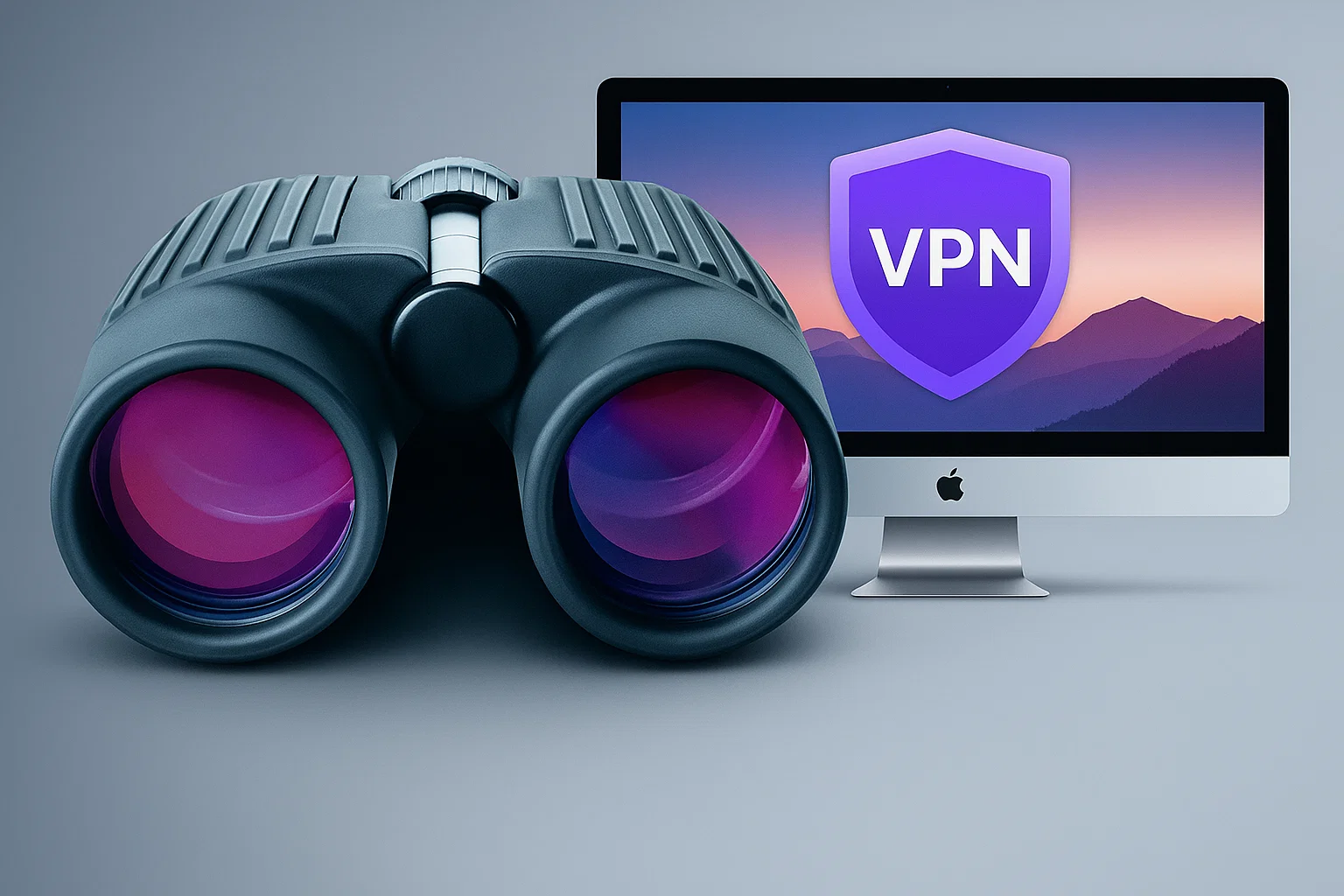The Creative Remote Access Challenge
Enterprise Mac Mastery

Most creative agencies approach remote work by trying to transfer massive project files over VPN connections. This creates an immediate bottleneck: a 4K video project can be hundreds of gigabytes, making file transfers painfully slow and VPN bandwidth a constant constraint.
The smarter approach eliminates file transfers entirely.
The Workstation-as-a-Service Strategy
Forward-thinking creative directors are implementing a different workflow: using laptops as thin clients that connect via Apple Remote Desktop to their primary office workstations over VPN. This approach transforms how remote creative work functions:
Zero file transfers All project files remain on the office workstation and shared storage
Full workstation power Access to expensive GPUs, extensive RAM, and professional monitoring hardware
Complete software access No need to manage software licences across multiple devices
Invisible sessions ARD's curtain mode hides the remote session, maintaining privacy even in open offices Instead of struggling with file synchronisation and bandwidth limitations, creatives get the full power of their office setup from anywhere with decent internet connectivity.
Why This Changes Everything
A motion graphics artist working on a client project can access their fully-configured workstation - complete with calibrated monitors, render farms, and terabytes of assets - from their kitchen table. The laptop becomes merely a window into their professional workspace.
More importantly, sensitive client work never leaves the office environment. Project files remain on secure office storage, software licences stay tied to designated workstations, and IT teams maintain complete control over data governance.
Strategic VPN Architecture for Creative Studios
Site-to-Site Connectivity for Multi-Location Teams
Creative agencies with multiple offices need seamless connectivity between locations. Site-to-site VPNs create a unified network where teams can access shared resources regardless of their physical location.
This approach eliminates the need for individual client software on every device while ensuring automatic connection for all studio equipment. When properly configured, teams in different locations can collaborate on the same project files as if they were in the same building.
Apple Remote Desktop: The Hidden Session Advantage
Apple Remote Desktop offers a crucial feature that most agencies don't fully utilise: curtain mode. When enabled, ARD completely hides the remote session from anyone at the office workstation. The screen appears locked or displays a screensaver, while the remote user has complete access to the system.
This creates perfect privacy for confidential client work. A creative director can access sensitive projects from home while maintaining complete discretion, even if colleagues are nearby the office workstation.
Technical Implementation Requirements:
Dedicated network configuration Ensures ARD traffic receives priority bandwidth allocationSplit tunnelling routes creative applications through the VPN while allowing local internet access for video calls and communication tools
Session persistence Maintains connections even when switching networks or closing laptop lidsMulti-monitor support enables full workspace replication for complex creative setups
The performance advantage is substantial. Rather than compressing and transferring gigabytes of project files, only screen updates travel over the VPN connection. A 4K timeline scrub that would take minutes to transfer as files happens instantly as visual updates.
Centralised Storage Strategy
Network Attached Storage systems like Synology or QNAP can be accessed securely through VPN connections rather than exposing them directly to the internet. This approach enables several critical workflows:
Centralised media libraries Where all project files remain on high-performance studio storage
Collaborative editing With multiple team members accessing the same project simultaneously
Proxy workflows Remote editing while keeping original high-resolution files secure
Version control Ensuring everyone works with the latest project iterations
Protocol Selection for Creative Workflows
Different VPN protocols serve different purposes in creative environments:
WireGuard/NordLynx Offers the fastest speeds with minimal overhead, essential for large file transfers and high-quality video streaming. This protocol works particularly well for creative professionals who need maximum bandwidth.
OpenVPN Provides maximum configurability and strong encryption for security-sensitive projects. While slightly slower, it offers better firewall traversal and more granular access controls.
IKEv2/IPSec Excels with mobile devices and unstable connections, automatically reconnecting when team members move between locations or networks.
The optimal approach often involves implementing multiple protocols for different use cases rather than forcing all traffic through a single solution.
Implementation Considerations for Workstation-Over-VPN
Hardware and Network Requirements
Office workstation preparation Involves configuring systems to remain accessible while appearing inactive to local users. This includes proper power management settings, network interface configuration, and ARD service optimisation.
Bandwidth allocation Becomes critical when multiple team members access office workstations simultaneously. Each high-quality ARD session requires consistent bandwidth allocation to prevent performance degradation during collaborative work periods.
Home network optimisation Ensures stable connectivity for professional creative work. This often involves ethernet connections, quality router configuration, and bandwidth prioritisation for creative applications.
Security Protocol Implementation
Workstation access controls Should include time-based restrictions, specific user authentication, and session logging to maintain accountability for client project access.
VPN tunnel configuration Requires protocol selection that balances security with the low-latency requirements of real-time creative applications.
Session monitoring Enables IT teams to identify performance issues and security concerns before they impact creative productivity or client deliverables.
Multi-User Coordination
Creative studios need systems that prevent conflicts when multiple team members might need access to shared resources or when someone needs to work at the office workstation locally.
Scheduling integration With calendar systems helps coordinate workstation usage and prevents access conflicts during critical project periods.
Resource allocation Ensures render jobs, export processes, and intensive computational tasks don't interfere with remote ARD session performance.
What to Avoid
Many creative agencies make costly mistakes when implementing workstation-over-VPN solutions:
Attempting to use standard screen sharing tools Like Zoom or Teams for professional creative work results in poor colour reproduction and inadequate performance for detailed visual work.
Insufficient bandwidth planning For multiple simultaneous ARD sessions can create bottlenecks during peak usage periods when several team members are working remotely.
Generic VPN configurations That don't prioritise ARD traffic lead to stuttering, lag, and frustrated creatives who abandon remote work entirely.
Exposing ARD directly to the internet Without VPN protection creates significant security vulnerabilities that can compromise entire network infrastructure.
Poor session management That doesn't properly handle disconnections results in locked workstations and productivity losses when network connections are unstable.
The Competitive Intelligence Advantage
This workstation-over-VPN approach provides creative agencies with a significant competitive advantage that most studios haven't discovered:
Talent retention Improves dramatically when senior creatives can maintain their full productive capacity while working flexibly
Client confidentiality Remains intact since sensitive projects never leave the controlled office environment
Resource optimisation Allows expensive workstation investments to serve multiple working patterns without duplicating hardware costs
Business continuity Ensures project delivery continues regardless of office accessibility or team member locations
Getting Implementation Right
VPN infrastructure for creative teams requires balancing security, performance, and usability. The technical complexity often exceeds what internal teams can manage alongside their primary responsibilities.
Success depends on understanding the specific requirements of creative workflows, implementing appropriate protocols for different use cases, and maintaining the infrastructure to ensure consistent performance.
Creative agencies need partners who understand both the technical requirements and the business imperatives of maintaining productive remote creative workflows. The investment in proper VPN infrastructure pays dividends in team productivity, client satisfaction, and competitive positioning.
Ready to implement secure remote access that maintains the performance your creative team needs? Let's discuss your specific requirements and design a solution that enables effective collaboration from anywhere.
We respect your privacy.








